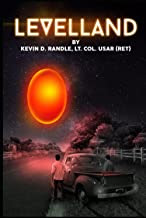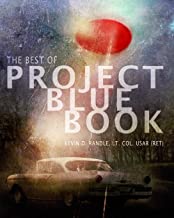I’m thinking here of Phil Plait and his Bad Astronomy column in which he talked about UFOs just a couple of days ago. He was suggesting that when he lectured, he was often asked if he believed in aliens and flying saucers. His answer was, "Yes and no."
He meant, quite clearly, and he did explain it, that he believed there was life on other planets, mainly those outside the Solar System and that he didn’t believe we were being visited. His reasoning? He wrote:
Amateur astronomers, of course. They are dedicated observers, out every night peering at the sky. If The Truth Is Out There, then amateur astronomers would be reporting far and away the vast majority of UFOs.
But they don’t. Why not? Because they understand the sky! [Emphasis in original] They know when a twinkling light is Venus, or a satellite, or a military flare, or a hot air balloon, and so they don’t report it.
That, to me, is the killer argument that aliens aren’t visiting us. If they were, the amateur astronomers would spot them.
The problem here is that astronomers, both professional and amateur have reported UFOs, and if we add in atmospheric scientists, we increase the pool of those who understand the sky and who have reported UFOs.
Examples you say?
Certainly. The one that springs immediately to mind is Clyde Tombaugh who was credited with discovering the now dwarf planet, Pluto. In 1949, at 10:45, Tombaugh, his wife and his mother-in-law saw something strange in the night sky. The full report is now housed at the J. Allen Hynek Center for UFO Studies in Chicago, and I have held the original report in my hands (and I wonder what that document would bring on eBay?).
Tombaugh wrote, "I happened to be looking at the zenith... when suddenly I spied a geometrical group of faint bluish-green rectangles of light... As the group moved south-southeasterly, the individual rectangles became foreshortened, their space of formation smaller... and their intensity duller, fading from view at about 35 degrees above the horizon... My wife thought she saw a faint connecting glow across the structure."
I’m sure that we’re about to hear that Dr. Donald Menzel, the UFO debunker and critic of anyone who suggested that any UFOs are anything other than misidentifications or hoaxes, was able to solve the sighting. He suggested that "a low, thin layer of haze or smoke reflected the lights of a distant house or some other multiple source."
Tombaugh, who saw the objects replied to Menzel, who didn’t see them, writing, "I doubt that the phenomenon was any terrestrial reflection, because in that case some similarity to it should have appeared many times... nothing of the kind has ever appeared before or since."
Well, a UFO sighting by one astronomer does not make the complete case, so let’s take a look at that paragon of scientific investigation, the Scientific Study of Unidentified Flying Objects now almost universally called the Condon Committee. They, of course, didn’t bother with their own research, but quoted from Project Blue Book Report No. 8 dated 31 December 1952.
The Blue Book astronomical consultant (which they don’t name but everyone today knows it was Dr. J. Allen Hynek, seen here) interviewed 44 astronomers about their attitudes about UFOs and found, not surp
 risingly, that most were completely indifferent to UFOs, or at best, mildly interested. Only eight said they were very interested.
risingly, that most were completely indifferent to UFOs, or at best, mildly interested. Only eight said they were very interested. The important point here is that five of them, according to Hynek, "made sightings of one sort or another. This is a higher percentage than among the populace at large. Perhaps this is to be expected since astronomers do, after all, watch the skies."
Hynek said that when he told these astronomers that there were some cases that were highly interesting and in which there was no easy solution, their interest was "almost immediately aroused."
This, of course, goes back to the original comment that amateur astronomers don’t see flying saucers and if they don’t, then there simply can’t be anything to them. But here we’re talking about the professionals, who confided in Hynek because he was a colleague. Hynek, because of his position with Project Blue Book had some inside knowledge about UFOs and he was taking the whole thing seriously.
Hynek, in his report added another comment that explains part of this perception that astronomers don’t see UFOs. Hynek noted, "And certainly another contributing factor to their desire not to talk about these things is their overwhelming fear of publicity. One headline in the nation’s papers to the effect that ‘Astronomer Sees Flying Saucer’ would be enough to brand the astronomer as questionable among his colleagues."
So now we learn that astronomers do see UFOs and they do not report them for fear of professional ridicule. I heard one professional astronomer, in the 1970s, when asked what he thought of Hynek’s work reply, "Allen always wanted to discover a new constellation."
What that tells us is that Hynek’s interviews of two decades earlier were still true in the 1970s, and we know that it is true today. We still have the professional scientists making pronouncements on the topic without benefit of personal knowledge. They are all too willing to dismiss the topic without bothering to learn the facts because, to do so, they would have to wade through oceans of ill-informed skeptical comment, such as Menzel’s dismissal of Tombaugh’s sighting.
But let’s ask one other question. When does anecdotal testimony become scientific observation? When does the training of the person making those observations suggest some sort of expertise? Does a pilot, military or commercial, with tens of thousands of hours in the cockpit, who is familiar with what is in the sky, make anecdotal statements or refined scientific commentary?
What about the use of instrumentation? Charles Moore (seen here), the man who claims to have launched the balloon array that explains the Roswell UFO crash has his own, unexplained UFO sighting. On April
 24, 1949 Moore and four Navy technicians in New Mexico were tracking a weather balloon using a theodolite that consisted of a 25-power telescope equipped to provide readings on vertical and horizontal bearings. Given his observations as it passed in front of a mountain range, he estimated the UFO was traveling at 18,000 mph, before it disappeared in a sharp climb.
24, 1949 Moore and four Navy technicians in New Mexico were tracking a weather balloon using a theodolite that consisted of a 25-power telescope equipped to provide readings on vertical and horizontal bearings. Given his observations as it passed in front of a mountain range, he estimated the UFO was traveling at 18,000 mph, before it disappeared in a sharp climb. Here was a man who was familiar with the sky, who watched the object through a theodolite so that he could make educated estimates of the object’s ability, and who reported this to Project Blue Book. The sighting is labeled as "unidentified."
Menzel, of course, knew that this couldn’t be anything extraordinary. According to him he could identify the object. In a conversation with Moore, Menzel said that it was no object at all but a mirage, an atmospheric reflection of the true balloon, making it appear as if there were two objects in the sky instead of one. He was so sure of this that he told Moore about the solution.
Moore, however, describes himself as an atmospheric physicist and considers himself as qualified as Menzel to discuss the dynamics of the atmosphere. And, according to Moore in an interview I conducted on El Paso radio station KTSM, the weather conditions were not right for the creation of mirages that day. Since Moore was on the scene, and since his training qualified him to make judgements about the conditions of the atmosphere, his conclusions are more important than Menzel’s wild speculations.
Moore is no fan of the extraterrestrial, as evidenced by some of his statements about the Roswell case and UFOs to various writers, including me. But, his sighting stands as one that should be counted as a scientific observation rather than as mere anecdotal testimony.
I could go on, but what’s the point. I have refuted the original idea that astronomers do not see UFOs. I have provided the documentation for this claim, and for those interested in Moore’s sighting, it is housed in the Project Blue Book files. Only the names have been removed, but we can, in most cases, put those names back in. In my Project Blue Book - Exposed, I have a listing of all the Blue Book unidentified cases.
So, now that we know that astronomers do see UFOs and some even report them, where do we go? These scientists are familiar with the sky, they understand what is in the sky, but sometimes they see things that are extraordinary and that do not fit into the nice little categories we have created for them. Sometimes, you could say, they see flying saucers.

























